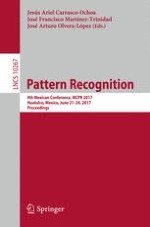2017 | OriginalPaper | Chapter
An Exploration Strategy for RL with Considerations of Budget and Risk
Authors : Jonathan Serrano Cuevas, Eduardo Morales Manzanares
Published in: Pattern Recognition
Publisher: Springer International Publishing
Activate our intelligent search to find suitable subject content or patents.
Select sections of text to find matching patents with Artificial Intelligence. powered by
Select sections of text to find additional relevant content using AI-assisted search. powered by
